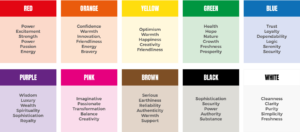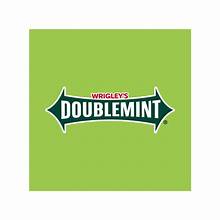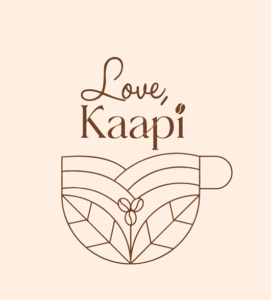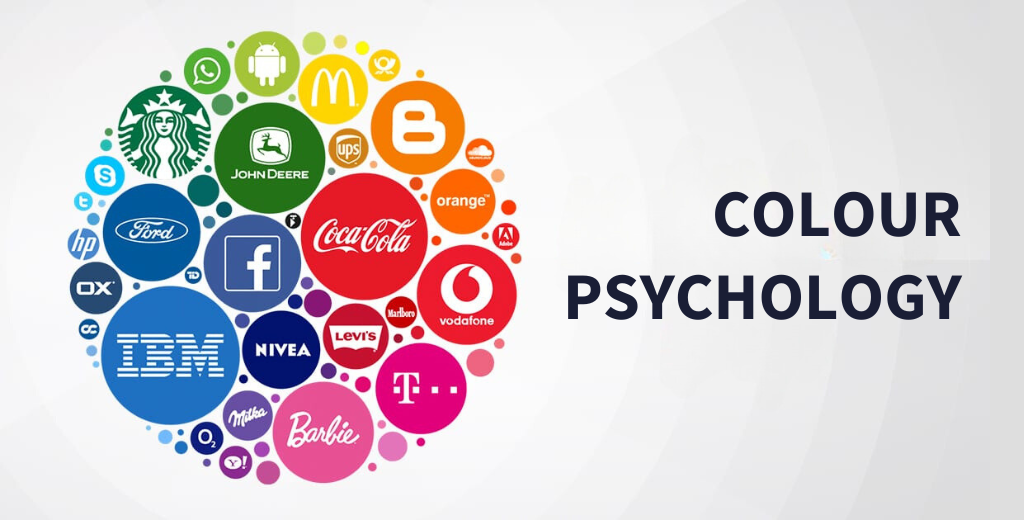There’s more to colours than meets the eye; they possess an inherent ability to speak a universal language, transcending cultural boundaries and resonating with individuals on a primal level.
Think of brands like Just Herbs‘ plum purple-ish color palette, Minimalist’s combination of black and white, and H&M’s red logo. These brands have harnessed the innate power of colour in their branding to leave an indelible mark on our collective consciousness.
Today, as we dive deeper into the art and science of colour psychology, we’ll explore how specific shades can trigger emotions, create subconscious associations, and even influence consumer insights.
Colour Psychology: Whar Is It?
Colour psychology is the captivating study of how colours influence human emotions, behaviour, and perceptions. It explores the powerful connections between hues and the subconscious mind, revealing how specific colours can evoke feelings, trigger memories, and even impact decision-making processes.

However, most of our understanding of how colours impact the psychological functioning of humans is more applied than theoretical. We simply know the associations but do not know why they occur. So let’s go through some important theories about colours to understand them better!
1. Elliot and Maier’s Colour-In-Context Theory
In Elliot and Maier’s Colour-In-Context Theory, colours are like chameleons, changing their shades depending on the company they keep! Their theory draws on social learning and biology.
Some of our reactions to colours happen because we’ve repeatedly seen them paired with specific things. And some reactions are built into us and get shaped by what we learn from others. For instance, blue on a ribbon might make us feel good because it’s linked to winning, but it’s a different story on meat—that’s not a good sign!
In short, colours are like social cues that can change their meaning depending on where we find them.
2. Meier and Robinson’s Conceptual Metaphor Theory of Colour
Meier and Robinson believed that how we talk and think about abstract things is connected to our real-life experiences, using “conceptual metaphors.” So, when we say we’re “seeing red” when angry, it’s not just a coincidence—our brain links anger with the reddening of the face, making it a metaphor!
These metaphorical connections don’t just stop at language play; they actually influence our judgements and views. For example, we might see white things as pure and good.
How Do Colours Affect Brands?
Each time a consumer engages with a brand, a golden chance emerges for that company to shape how people see them. The power lies in the hands of clever decision-makers who get to pick the designs and colours that’ll sway a consumer’s decision to buy and contribute to brand building. Here’s how they work their colourful magic:
Emotional Connection
Colours have the incredible ability to stir up emotions. A warm colour like red evokes feelings of excitement and energy, while yellow signifies joy and happiness. Think of YouTube. Similarly, cool colours like blue and green can create a sense of calm, security, relaxation, and trust. Think of the popular mint brand Doublemint. A brand that uses the right colours can tap into consumers’ emotions, forging a deep and lasting connection.


Brand Identity
Consistent use of colours becomes a signature part of brand building, making the brand instantly recognisable. When consumers see those colours, they know it’s your brand without even reading the name. Colours become synonymous with your products, services, and values.
C’mon, don’t we know it’s “Barbie” when we see hot Fuschia pink or Red Bull when we see a red and blue energy drink can?


Cultural Associations
Colours carry cultural meanings and associations. For example, yellow. It is a royal colour in Japan but is often linked to pornography in China. Moreover, it’s considered sunshine and good weather in Europe, but in Germany and France, it’s a symbol of jealousy and envy. Understanding cultural context allows brands to communicate effectively with diverse audiences.
Perceived Quality
Certain colours can create an impression of quality and luxury. Sleek blacks, regal golds, ivory, or elegant silvers can elevate a brand’s image, making consumers associate it with high-end, premium products or services. Consider Dior and Chanel.


Breaking Down Indian Brands and Their Choice of Colours
1. Manyavar
Manyavar was launched at a time when men’s ethnic wear was not given much importance. The brand had to build a category and carve its niche, eventually becoming a catalyst for growth in men’s occasionwear. In fact, one of those brands became a category disruptor in the world of shirts and suits shaped by brands like Raymond. It was indeed a bold move.
Manyavar, as a brand, is associated with the colours Deep Saffron and Cadmium Orange. As per colour psychology, orange and its shades reflect warmth, joy, and boldness. Since Manyavar is an occasion wear brand and a category disruptor, its intention may have been to make people feel welcomed, reflect the joy of celebrations, and signify a bold move. The choice of orange may also be understood in a cultural context, given that orange in Indian culture signifies a sense of community, belonging, sacredness, and a union of love and wisdom.

2. Meesho
Meesho is an Indian shopping platform that offers a wide range of products, from apparel to cosmetics and home utility. The platform recently rebranded itself to reflect the values of inclusivity. Their new logo, which was unveiled on June 8, 2023, features hues of “Jamuni” and “Aam.”
Jamuni reflects aspirations, while Aam is seen as inviting and welcoming. It reflects the brand’s vision to become an inclusive and egalitarian e-commerce platform.

3. Love Kaapi
We at StartInc were tasked with choosing the colours that would represent Love Kaapi as part of its branding plan. As an artisanal, homegrown coffee brand grown, roasted and ground in the hills of Chikmagalur and served at the doorstep, it was important we chose a colour that reflected a feeling of the hills as well as the home. And that’s when we locked in on hues of brown and earthy tones as a reflection of coffee, hills, home, and comfort—everything that Love Kaapi offers.

See You Next Time!
Colours wield an extraordinary power to breathe life into logos, evoke emotions, and etch memories in the minds of consumers. Just like a painter’s palette, the right combination of hues can elevate a brand from mundane to magical.
We at StartInc understand the play of colours in and out and its impact on a brand’s branding. Our branding experts walk the mile with you to ensure your brand’s identity is distinct and imprints itself in the minds of your consumers. So if you are a business or brand aiming for the same, you know where to find us—here!



